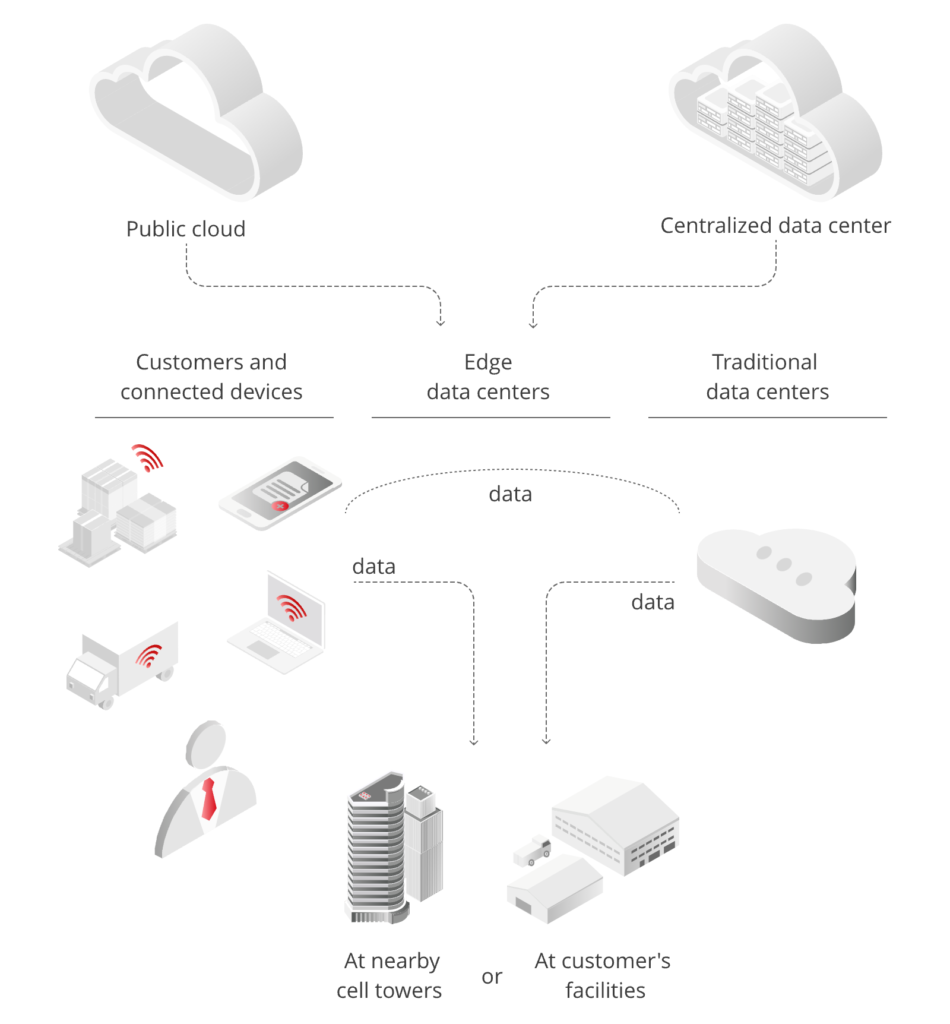SDN in the Data Center
In the data center, Software-Defined Networking (SDN) revolutionizes the traditional network architecture by centralizing control and introducing programmability. SDN enables dynamic and agile network configurations, allowing administrators to adapt quickly to changing workloads and application demands. This centralized control facilitates efficient resource utilization, automating the provisioning and management of network resources based on real-time requirements.
SDN’s impact extends to scalability, providing a flexible framework for the addition or removal of devices, supporting the evolving needs of the data center. With network virtualization, SDN simplifies complex configurations, enhancing flexibility and facilitating the deployment of applications.
This transformative technology aligns seamlessly with the requirements of modern, virtualized workloads, offering a centralized view for streamlined network management, improved security measures, and optimized application performance. In essence, SDN in the data center marks a paradigm shift, introducing unprecedented levels of adaptability, efficiency, and control.
The Difference Between SDN and Traditional Networking
Software-Defined Networking (SDN) and traditional networks represent distinct paradigms in network architecture, each influencing data centers in unique ways.
Traditional Networks:
- Hardware-Centric Control: In traditional networks, control and data planes are tightly integrated within network devices (routers, switches).
- Static Configuration: Network configurations are manually set on individual devices, making changes time-consuming and requiring device-by-device adjustments.
- Limited Flexibility: Traditional networks often lack the agility to adapt to changing traffic patterns or dynamic workloads efficiently.
SDN (Software-Defined Networking):
- Decoupled Control and Data Planes: SDN separates the control plane (logic and decision-making) from the data plane (forwarding of traffic), providing a centralized and programmable control.
- Dynamic Configuration: With a centralized controller, administrators can dynamically configure and manage the entire network, enabling faster and more flexible adjustments.
- Virtualization and Automation: SDN allows for network virtualization, enabling the creation of virtual networks and automated provisioning of resources based on application requirements.
- Enhanced Scalability: SDN architectures can scale more effectively to meet the demands of modern applications and services.
In summary, while traditional networks rely on distributed, hardware-centric models, SDN introduces a more centralized and software-driven approach, offering enhanced agility, scalability, and cost-effectiveness, all of which positively impact the functionality and efficiency of data centers in the modern era.
Key Benefits SDN Provides for Data Centers
Software-Defined Networking (SDN) offers a multitude of advantages for data centers, particularly in addressing the evolving needs of modern IT environments.
- Dealing with big data
As organizations increasingly delve into large data sets using parallel processing, SDN becomes instrumental in managing throughput and connectivity more effectively. The dynamic control provided by SDN ensures that the network can adapt to the demands of data-intensive tasks, facilitating efficient processing and analysis.
- Supporting cloud-based traffic
The pervasive rise of cloud computing relies on on-demand capacity and self-service capabilities, both of which align seamlessly with SDN’s dynamic delivery based on demand and resource availability within the data center. This synergy enhances the cloud’s efficiency and responsiveness, contributing to a more agile and scalable infrastructure.
- Managing traffic to numerous IP addresses and virtual machines
Through dynamic routing tables, SDN enables prioritization based on real-time network feedback. This not only simplifies the control and management of virtual machines but also ensures that network resources are allocated efficiently, optimizing overall performance.
- Scalability and agility
The ease with which devices can be added to the network minimizes the risk of service interruption. This characteristic aligns well with the requirements of parallel processing and the overall design of virtualized networks, enhancing the scalability and adaptability of the infrastructure.
- Management of policy and security
By efficiently propagating security policies throughout the network, including firewalling devices and other essential elements, SDN enhances the overall security posture. Centralized control allows for more effective implementation of policies, ensuring a robust and consistent security framework across the data center.
The Future of SDN
The future of Software-Defined Networking (SDN) holds several exciting developments and trends, reflecting the ongoing evolution of networking technologies. Here are some key aspects that may shape the future of SDN:
- Increased Adoption in Edge Computing: As edge computing continues to gain prominence, SDN is expected to play a pivotal role in optimizing and managing distributed networks. SDN’s ability to provide centralized control and dynamic resource allocation aligns well with the requirements of edge environments.
- Integration with 5G Networks: The rollout of 5G networks is set to revolutionize connectivity, and SDN is likely to play a crucial role in managing the complexity of these high-speed, low-latency networks. SDN can provide the flexibility and programmability needed to optimize 5G network resources.
- AI and Machine Learning Integration: The integration of artificial intelligence (AI) and machine learning (ML) into SDN is expected to enhance network automation, predictive analytics, and intelligent decision-making. This integration can lead to more proactive network management, better performance optimization, and improved security.
- Intent-Based Networking (IBN): Intent-Based Networking, which focuses on translating high-level business policies into network configurations, is likely to become more prevalent. SDN, with its centralized control and programmability, aligns well with the principles of IBN, offering a more intuitive and responsive network management approach.
- Enhanced Security Measures: SDN’s capabilities in implementing granular security policies and its centralized control make it well-suited for addressing evolving cybersecurity challenges. Future developments may include further advancements in SDN-based security solutions, leveraging its programmability for adaptive threat response.
In summary, the future of SDN is marked by its adaptability to emerging technologies, including edge computing, 5G, AI, and containerization. As networking requirements continue to evolve, SDN is poised to play a central role in shaping the next generation of flexible, intelligent, and efficient network architectures.

